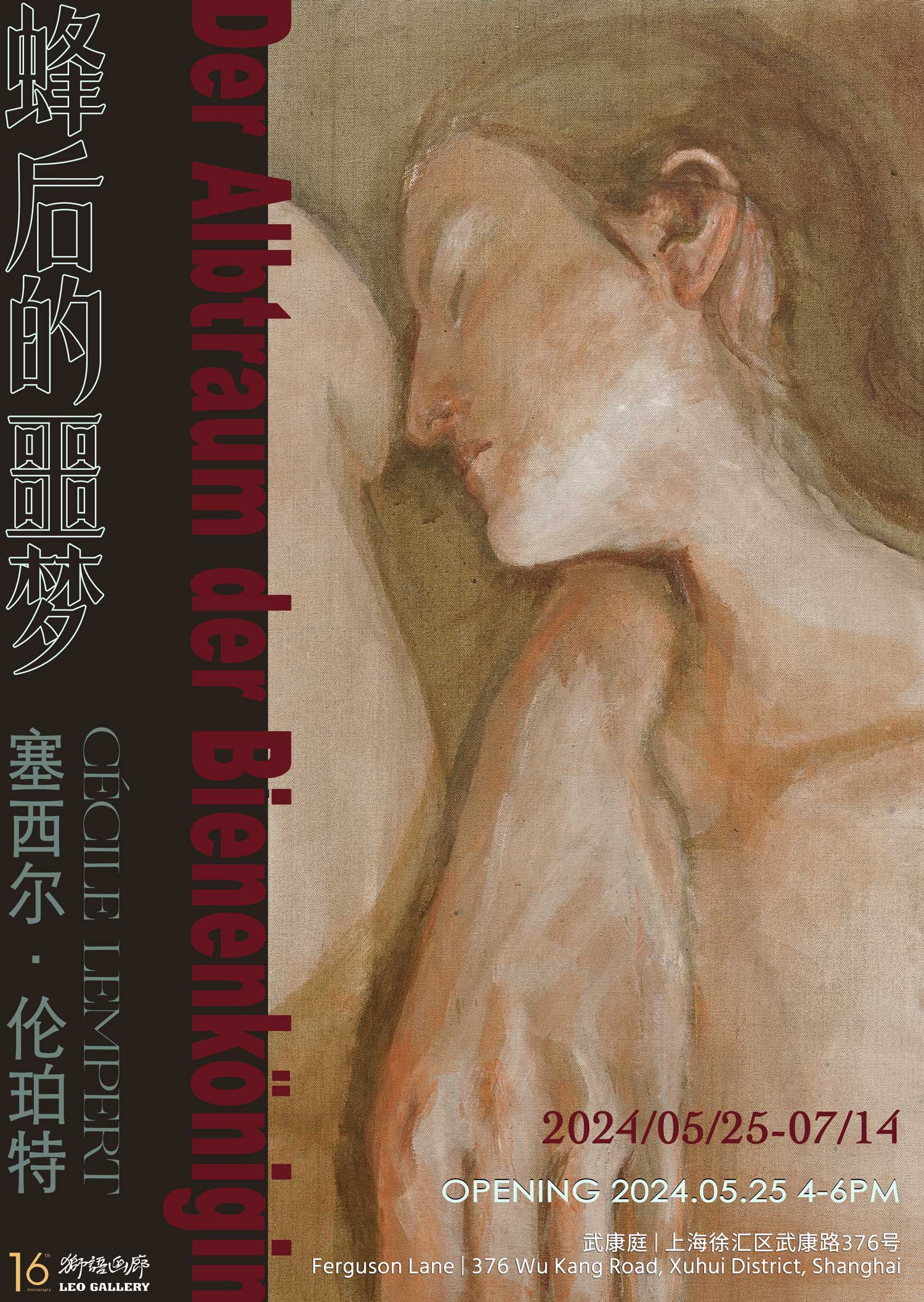展期 Period:
2024.5.25—2024.7.14
艺术家 Artist:
地点 Venue:
狮語画廊 Leo Gallery(上海)
前言 Foreword:
狮語画廊将于2024年5月25日至7月14日荣幸呈现塞西尔·伦珀特(Cécile Lempert)在中国的首次个展《蜂后的噩梦》,呈现艺术家于今年创作的最新作品。
伦珀特的创作与自身周遭环境紧密相连,聚焦于特定的心理情态与微妙的人际关系。她将自己在家庭相簿存档中获取的灵感,勾连起图像史的不同段落。在其间,艺术家并不仅仅关注轻松悦人的部分,而是更感兴趣于矛盾和模棱两可的中间状态,力图覆盖场景的情绪完整性。同时,“通过在绘画表现中模糊具体的个体元素,伦珀特的作品形成了挪移了时空特征的新叙事”1,却仍笼罩着一种怀旧的情致(detemporalization of nostalgia)。
“蜂后的噩梦”系列名源自艺术家儿子伊斯梅尔(Ismael)的绘画,画面反映了他某一晚的梦境和他所创造出的“蜂后”形象。伦珀特感兴趣的是,在人遭遇不安时,梦将那些令人不安的事物转化为一种新的“观念”、“事件”或是一种“流动的图像”,它们都是一种人们自我消解的转化行为至关重要的一环。从孩童处理恐惧和失控时刻的一种极其直接又下意识的策略出发,伦珀特深信这种梦境的心理机制是一种奇妙的颠覆方式,可延伸运用至人们对权力、阶层难题的探讨,“蜂后”这一特别的形象亦正与这些相连领域产生了奇妙呼应。2
在展览中,伦珀特毫无保留地展现了大尺幅的“家庭肖像”,通过穿透画布的视线在画与画之间建立了相互观察、隐秘私语的关系。“她透过绘画中人物或动物视线的转移去发现感知生命的脆弱与敬畏,她的构图方式让人想起机械图像(摄影或电影),不同画作中大量的运动也让彼此间触发观看。”3孩童般童趣的形式语言与细腻审视的心理留白相映成趣,并置于肖像边的模糊风景或好似“闯入”这个家庭故事的远方白马又抵减了艺术家笔下角色眼神的可读性,干扰了现实与想象的边界。“即便这些作品具有摄人心魂的情绪密度,其空间上的精妙留白又为每位观者于当前此刻的个人投射留有了余地。”1
[1] 米里亚姆·贝丁(Miriam Bettin),《谁让坚实的树干再次发声》展览文章
[2] 塞西尔·伦珀特,《蜂后的噩梦》创作自述
[3] 贺潇,《复调·回响》展览文章
Leo Gallery is delighted to present Cécile Lempert’s debut solo exhibition in China, Der Albtraum der Bienenkönigin, on view from May 25 to July 14, 2014, showcasing the artist's latest body of works created this year.
Lempert's work is deeply intertwined with her immediate surroundings, focusing on specific psychological states and nuanced interpersonal relationships. Drawing inspiration from her family photo archives, she weaves together different segments of pictorial histories. Rather than merely highlighting the pleasant aspects, the artist is more intrigued by contradictions and ambiguities, striving to encompass the emotional integrity of the scenes. “By detaching individual pictorial elements, new narratives unfold that shift or even dissolve temporal and geographical localizations.”1 Yet, these works retain a nostalgic ambiance.
The series title, "Der Albtraum der Bienenkönigin (Queen Bee's Nightmare)", originates from a drawing by the artist's son, Ismael, reflecting a dream he had one night and the "Queen Bee" figure he created. Lempert is interested in “the bare psychologic effect of dreams as a tool for helping humans when we perceive something disturbing by transforming it into a new ‘perception’, ‘event’, or some kind of ‘floating image’ as a crucial part of the transformation act.” Starting from a very direct but subconscious strategy of a child to handle with fears and moments of losing control, Lempert believes that the psychological mechanism of such dreams is a fascinating subversion method to approach difficult topics such as the perception of power, hierarchy and authority, which resonates in the manifold associative field of this peculiar figuration of a “Queen Bee”.2
In the exhibition, Lempert unabashedly presents large-scale "family portraits," establishing relationships of mutual observation and whispered secrets between paintings through the penetrating gaze that traverses the canvas. "She discovers the fragility and reverence of perceived life through the shifting of the view of the figure or animal in her paintings, the way she composes her work is reminiscent of mechanical imagery (photography or film), and the large amount of movement in the different paintings triggers the viewing of each other."3 The childlike forms of expression in certain works harmonize with the exquisite depiction of specific psychological states from an adult’s perspective. Juxtaposing ambiguous landscapes alongside the portraits, or what seems like distant white horses "intruding" into the family narrative, further diminishes the readability of the characters' gazes captured by the artist's brush, disrupting the boundary between reality and imagination. “Despite their intensity, there are spatial voids that offer space for personal projections into the here and now.”1
1 Miriam Bettin, "Who makes the solid tree trunks sound again" exhibition text
2 Cécile Lempert, “Der Albtraum der Bienenkönigin”, artist statement.
3 He Xiao, “Polyphonic Resonance” exhibition text

